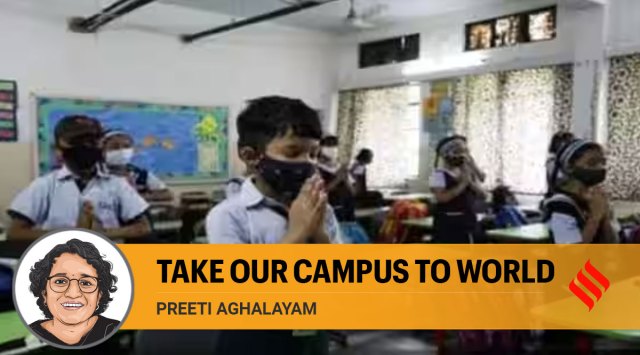
India is stepping into global education in a very big way. Current-day learners are keen to explore myriad domains based on their interests, skills and the expectations of the job market. India’s educational expertise across the spectrum provides these opportunities. Digital intervention is a distinct area of strength, which has already facilitated the scaling of educational offerings in India. We have also taken strategic steps, including the various articulations in the NEP 2020 that will enable a further increase in the awareness of the quality of Indian education across the world.
Students from several nations are obtaining Indian degrees currently, with significant financial support from the Government of India. Several institutions are catering to international student cohorts with specially curated post-graduate programmes, tuition breaks, scholarships, and industry exposure. We have several “joint degree” programmes between Indian and international educational institutions. This reciprocal mobility of students, particularly researchers, has been a very positive step — students are great ambassadors who embody the high quality of our training and bring it to the wider world. The collaborative research activities enrich the environments for students and faculty at both institutions.
While we as a collective examine these models from various lenses and evaluate advantages and disadvantages, it is also vital to think about various aspects that we should not compromise on, even as we expand. Scientific research today has to be interdisciplinary, multifaceted and should bring together a diversity of views. The complexity of the crises faced by us today — be it climate change and energy or the crunch on material resources — cannot be addressed by siloed thinking. Academic institutions typically evolve with a depth of expertise in niche areas and will benefit from the expertise of others. Both from the viewpoint of an individual student/researcher/teacher and from that of an institution, collaboration and convivial academic environments need melting pots.
We mark Independence Day by reflecting on what freedom and independence mean to us. In the context of education, higher education in particular, it is a matter of access to the right kind of education and opportunities for everyone. This brings us to a new model in Indian education that is coming to the fore now, where an Indian institution establishes a campus abroad. Of all the strategic steps towards the globalisation of Indian education, this is the most significant. The radar is now on the IITs, where international student cohorts and joint degree programmes are common, whereas the activity of an off-shore campus is new — and is being met with palpable enthusiasm.
IIT Madras has been first off the block, with the Zanzibar campus activities launched in July, and students to start classes in the fully-built campus on October 24. IIT-M’s academic rigour and excellence, modern pedagogy and curricula, decades of research and innovation experience, and of course open-minded faculty mentors, will handhold the students through the undergraduate and postgraduate degree programmes.
What will help mould this new campus and ensure that it not only preserves IIT’s excellence but also develops locally relevant vistas and influences, and is truly global in design? What growth aspirations should the institution aim for? What are the challenges that we should look out for? And most importantly, how can we ensure that it will meet the expectations of individual freedom and improved access to high-quality education? These questions are worth pondering.
The institution needs to be viewed in the context of the relationship between the countries (and the broader region) — as much as possible. Trade, tourism and education have linked India and East Africa through human history and it is worthwhile to consider IIT-M’s new campus as another aspect of this bond. The IITs are responsible for the way Indian education and research are viewed across the world, particularly in STEM fields. The influence of the IIT alumni on the world order is undeniable. Most of these impacts come about because of the opportunities students at the IITs have — to jobs, careers, networking, and entrepreneurship, apart from the grounding they receive in academic fundamentals. All of these should be brought into the overseas campuses as well.
If there is one aspect the IITs have long been challenged on, it is gender representation. The percentages of women students, researchers and faculty in the engineering disciplines have remained low, though the trend is improving. Globalisation of IITs can provide a way to overcome this challenge. The call is now to design programmes, campuses and institutions, keeping access and equity as critical considerations in the foundational frameworks of academic and research excellence.
On India’s 77th Independence Day, my view, as an academician, on what freedom means is clear. It means access to educational opportunities and associated experiences that can provide a path to individual and collective excellence. These are exciting times. The globalisation of Indian education — be it with the influx of gifted international student cohorts, combined programmes with international partners or the establishment of a vibrant new campus halfway across the globe — is here. We are ready to serve the needs of a bigger, more diverse population today.
The writer is Dean of School of Science & Engineering & Director-in-charge, IIT Madras Zanzibar campus